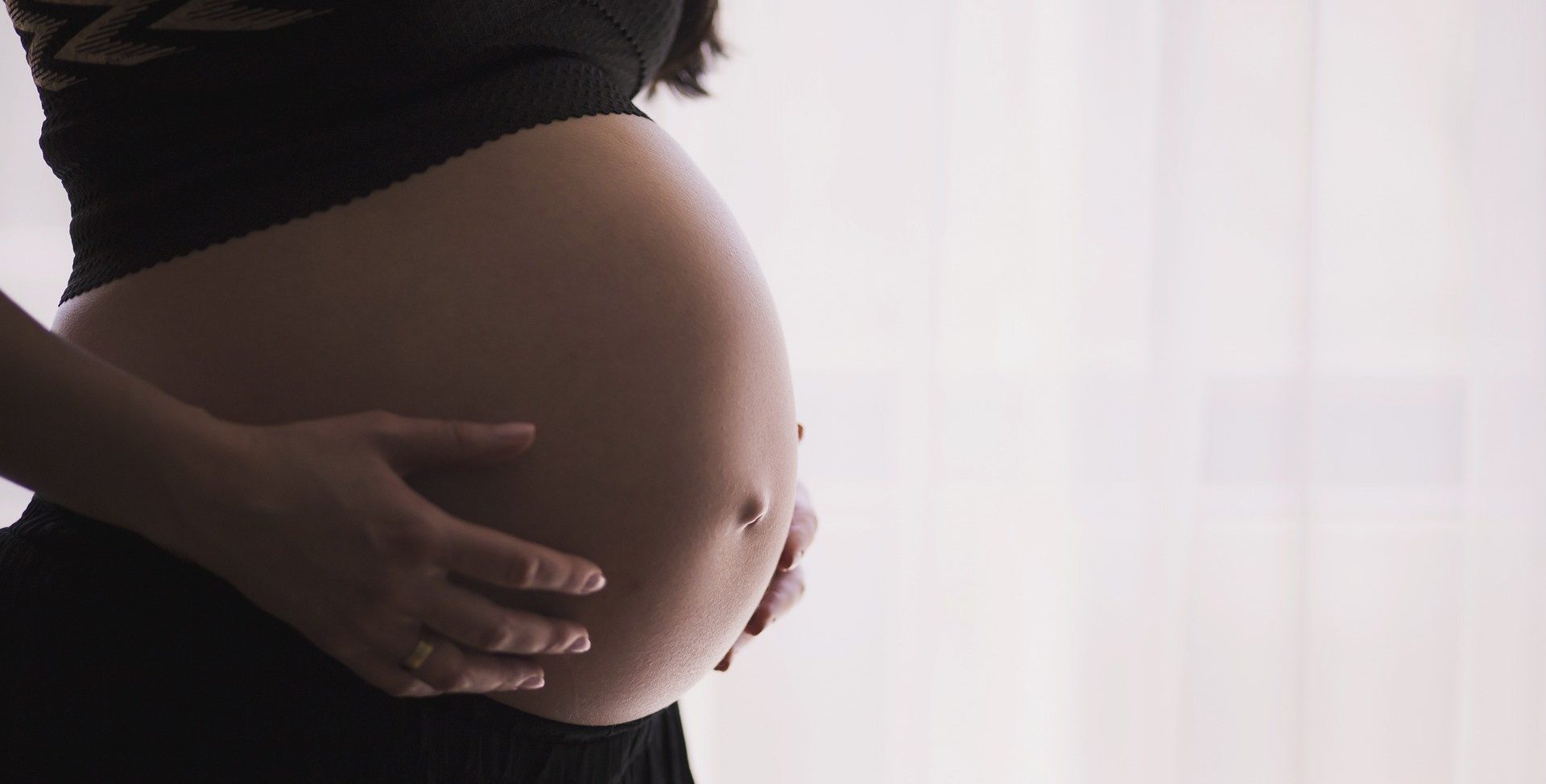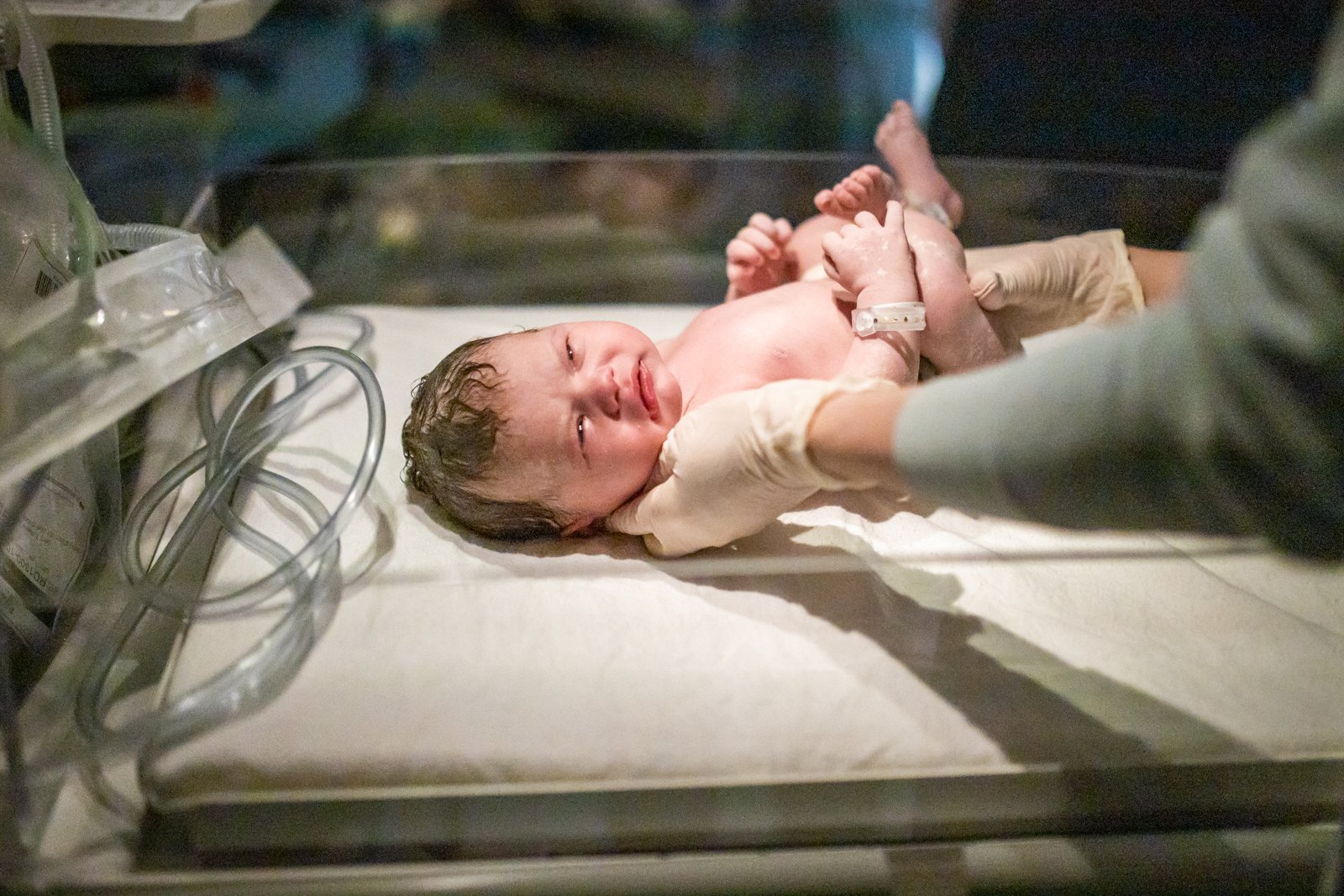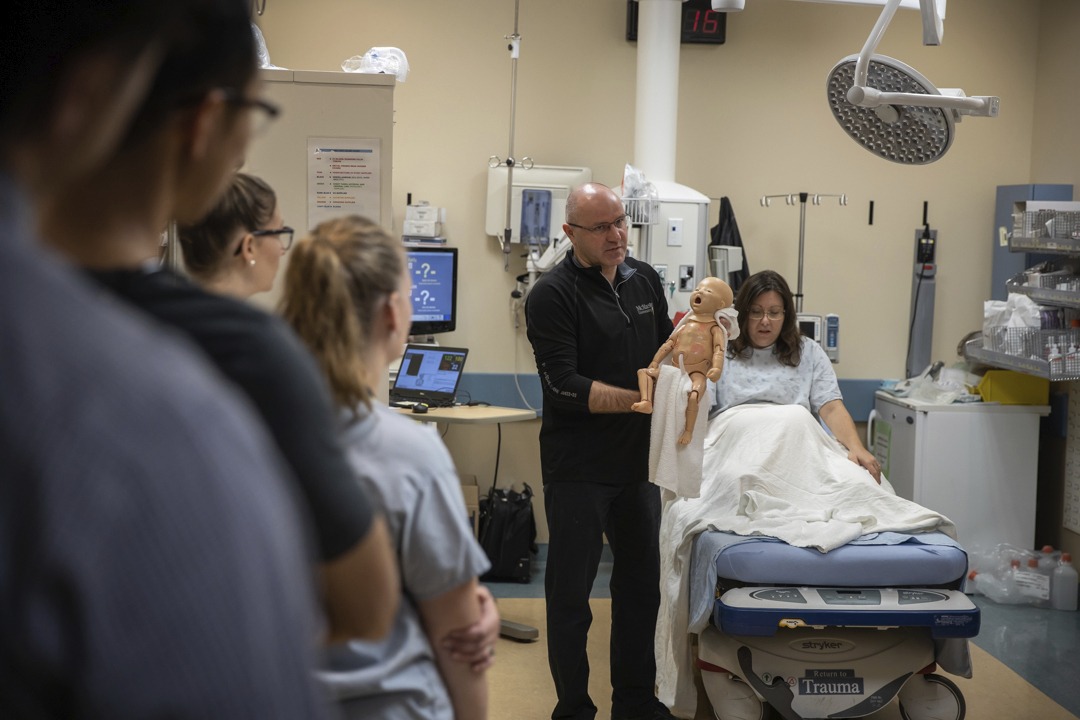
Pain relief options during labour
The labour process is intense – there is nothing quite like it.
Each person’s labour experience is unique and each person’s perception of pain is also unique. There are a number of pain relief options available to you while you’re labouring at home, and once you’re under the care of the Labour and Delivery team at McMaster University Medical Centre (MUMC). There are both medical and non-medical options.
Sarah Kirkwood, clinical leader of the women’s reproductive health clinics at MUMC, shares some of the options.
Water Therapy
Both cool and warm water can provide pain relief during all stages of labour. A hot or cold bath, shower, or compress can provide pain relief at home in early labour, and in hospital. Each of the labour rooms at MUMC have a private shower. There is also one immersion tub on the ward (different than a birthing tub where the birth takes place in the tub) available to those who wish to use it. There may be instances where this is not possible based on the need to monitor the baby, and should be discussed with your health care team.
Movement
The ability to move and change positions during each stage of labour can provide some pain relief and is often encouraged to help progress the labour process. This may include walking, standing, or using aids to modify your position in bed. We offer latex-free birthing balls and peanut positioning balls to modify positions to give the greatest relief for our patients. The birthing ball is used for positioning while you are mobile, while the peanut ball is used to position you while in bed. Both types of ball are used to support your comfort.
Massage
Massage is often a great pain relief option for most people. Attending prenatal classes will allow you to explore this and other pain relief options first hand. Massage is one way partners or support people can be involved in the labour process. Transcutaneous electrical nerve stimulation (TENS) machines are not available at MUMC. You may bring your own to use during your labour if it’s determined to be an appropriate option for you. TENS machines provide short-term relief of pain by sending small electrical impulses through the skin to the nervous system, reducing the body’s ability to transmit pain signals to the brain.
Narcotics
Pain medication administered by a nurse can be ordered by your health care team. These medications are usually intravenous or injected into a muscle. They are usually considered safe for both mom and baby at certain doses and at a certain times during labour, but may cause side effects such as drowsiness in both mom and baby. Patients receiving these medications will be monitored for side effects. The relief provided by narcotics is time limited and may require re-administration. The use of narcotics during labour is decided by the patient, based on their needs and wishes for pain relief. Any person who does not wish to receive narcotics can communicate this to their healthcare provider.
Epidural
An epidural may be requested at any time during labour (before beginning of labour to full dilation and imminent delivery). An anesthesiologist will assess if the procedure can safely be performed and discuss risks and benefits with you prior to proceeding. You must be able to sit/lie still during the procedure in order for it to be performed safely. We have a dedicated anesthesia team at MUMC available 24 hours a day/7days a week. An epidural provides pain relief throughout labour. Narcotics and epidurals have both risks and benefits, we encourage you to speak to your obstetrical care provider regarding pain management options.
Find what’s right for you
Strategies such as listening to music, focused breathing and relaxation techniques can also be effective pain relief options.
Prior to arriving to the hospital (and even during the course of your admission), we encourage you to speak with your health care practitioner about what pain relief options are available to you and what suits your desired birth experience. It is possible that some options will not be available to you based on your personal health situation. Plus, what works for one person may not be the right option for you.




